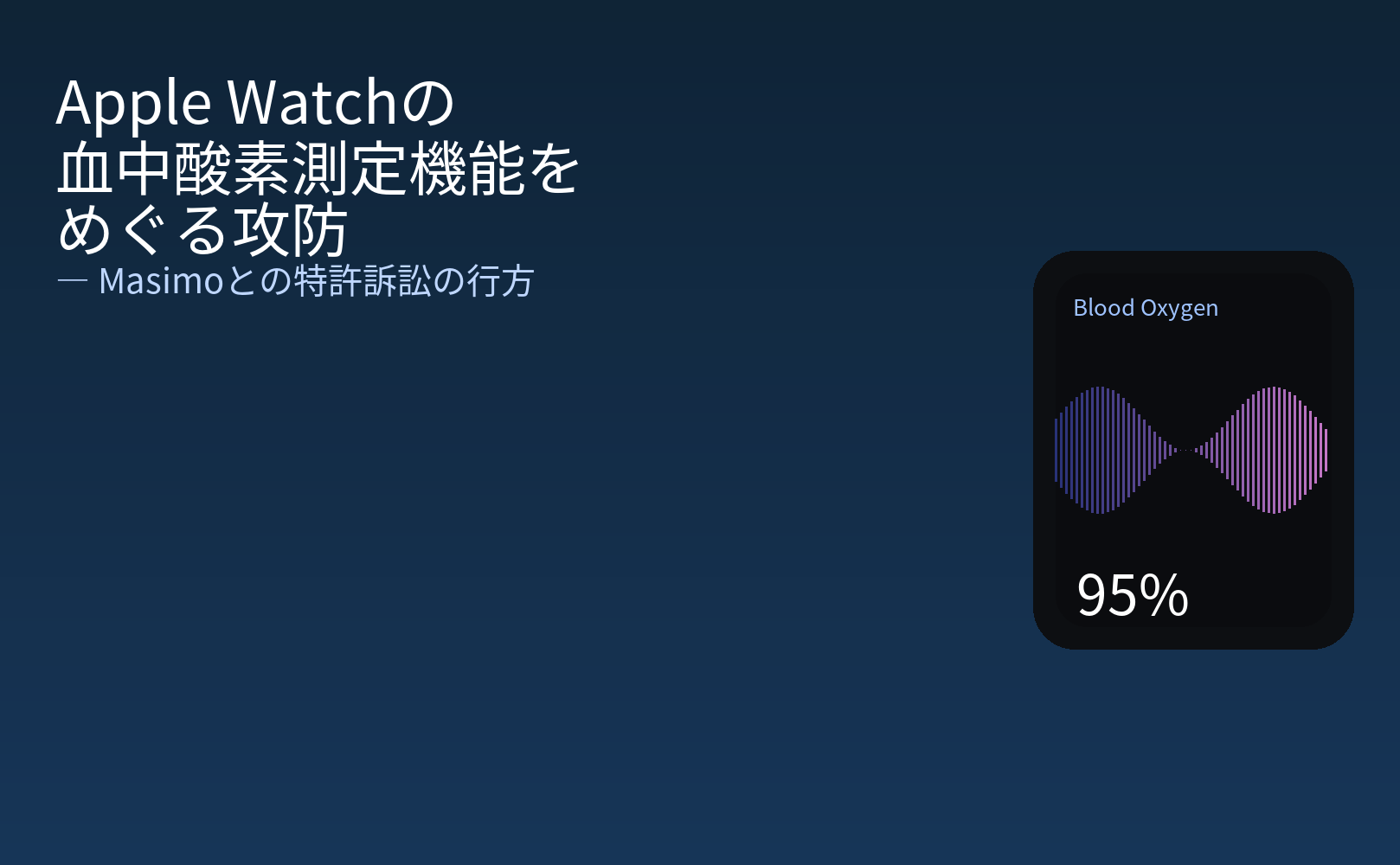Apple’s decision to reintroduce the blood oxygen monitoring function in the U.S. market is welcome news for users, while at the same time highlighting the ongoing and intense patent war between the medical device industry and technology companies. This article examines the background of the Apple–Masimo lawsuit, the industrial structure underlying it, and future prospects.
History of the Apple–Masimo Dispute
- 2021
Masimo filed a lawsuit against Apple, claiming that the “blood oxygen wellness function” in the Apple Watch Series 6 infringed its patents. As a result, Apple was prohibited from including the blood oxygen feature in Apple Watches sold in the U.S.
- August 1, 2025
The U.S. Customs and Border Protection (CBP) overturned its previous decision and issued a ruling favorable to Apple. Following this, Apple released a redesigned blood oxygen monitoring function.
- August 14, 2025
The new feature became available to U.S. users via iOS 18.6.1 and watchOS 11.6.1.
- August 20, 2025
Masimo filed another lawsuit, claiming that CBP had “exceeded its authority and violated due process.”
Legal Issues
This lawsuit raises two major points of contention:
- Patent Infringement
Did Apple’s “redesigned version” truly avoid Masimo’s patents, or is it essentially the same mechanism with only superficial changes?
- Legitimacy of Administrative Procedures
Masimo argues that CBP overturned its decision unilaterally without prior consultation with Masimo. The company claims this violates administrative procedure law and the Fifth Amendment’s due process clause, extending the dispute beyond patents into a broader debate about the scope of administrative authority.
Industrial Context
The conflict between Apple and Masimo is not just a corporate dispute but also part of a larger context:
- The Boundary Between Wearables and Medical Devices
The Apple Watch is marketed as a wellness device rather than a medical device. However, in practice, it provides features that are close to medical applications, which inevitably collide with the interests and patent rights of medical device manufacturers.
- Massive Investment and Regulatory Impact
Masimo highlights the timing of Apple’s $600 billion investment announcement in the U.S., which came just before CBP’s reversal. This raises suspicions about the balance between regulation and industrial policy.
- Impact on Users
U.S. users temporarily lost access to the blood oxygen feature but regained it. However, depending on the outcome of the lawsuit, the function could once again become unavailable, creating continued uncertainty for consumers.
Future Prospects
Three main scenarios can be envisioned:
- Apple Wins, Function Stabilized
If the redesigned version is recognized as avoiding infringement, Apple maintains its advantage in the wearable market.
- Masimo Wins, Function Disabled Again
The blood oxygen monitoring function could once more be disabled, and Apple may be forced to pay massive settlements or licensing fees.
- Settlement or Licensing Agreement
To avoid prolonged and costly disputes, both companies could reach a settlement involving a licensing deal or joint development.
The dispute over the Apple Watch’s blood oxygen function goes beyond a simple patent lawsuit, bringing into focus critical issues such as:
- the boundary between medicine and technology,
- the relationship between giant corporations and regulatory agencies,
- and the stability of consumer access to advanced functions.
The forthcoming rulings will mark a decisive turning point for the future of wearable technology.

